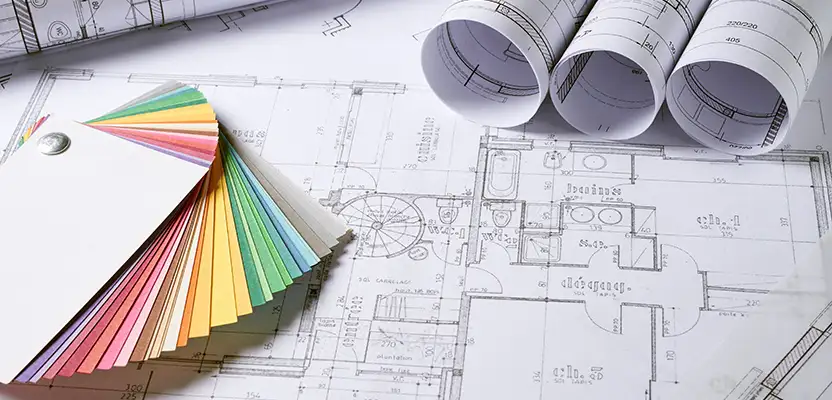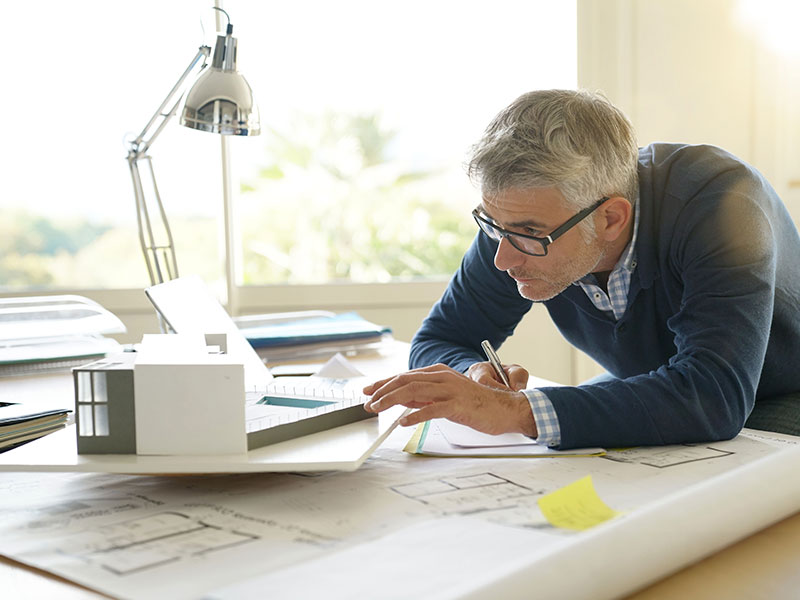Architect Insights on Balancing Form and Function
Architect Insights on Balancing Form and Function
Blog Article
Recognizing the Diverse Occupation Paths Available for Aspiring Architect
As an ambitious Architect, you have a world of career paths waiting for you. Each course uses distinct challenges and opportunities to use your creativity and technological know-how. Whether you're attracted to conventional design or the subtleties of sustainable design, there's a specific niche that straightens with your interests. Recognizing these varied alternatives can shape your expert trip, yet which direction will you select to explore first?
Typical Style: Creating Buildings and Frameworks
Conventional design concentrates on making structures and structures that mix capability with aesthetic appeal. As you explore this field, you'll appreciate the complex equilibrium in between kind and objective. You'll learn to draw inspiration from historical styles, integrating components like proportion, products, and craftsmanship. Your styles can reflect cultural heritage, showcasing local traditions while meeting contemporary demands.
You'll establish skills in drafting, model-making, and site analysis, allowing you to envision and connect your ideas successfully. Involving with customers, you'll need to understand their vision and convert it right into feasible layouts.
In addition, developing codes and sustainability methods are important in your job, ensuring your structures are eco friendly and safe. As you expand in your occupation, you'll discover opportunities in residential, business, or even restoration tasks, each offering special difficulties. Welcoming standard design paves the method for a fulfilling job that pays homage to the past while forming the future.
Urban Preparation: Shaping Areas and Public Spaces
As an aspiring Architect, you can play a crucial function as an urban coordinator, changing exactly how areas connect and function. By utilizing community involvement techniques, you'll assure that locals have a voice in forming their environment. And also, incorporating sustainable style concepts will certainly help produce rooms that not just satisfy today's requirements however additionally shield the future.
Role of Urban Planners
While several could believe of architects as the sole dreamers behind structures, metropolitan planners play a crucial duty in forming the wider landscape of neighborhoods and public spaces. By collaborating with various stakeholders, you'll aid create parks, transport systems, and household locations that promote social interaction and availability. Your experience in spatial layout and neighborhood dynamics allows you to imagine future growth while preserving social heritage.
Community Engagement Strategies
Reliable neighborhood engagement approaches are vital for city coordinators to guarantee that the voices of homeowners are heard and valued in the planning procedure. To promote meaningful discussion, you need to focus on open online forums and workshops where area members can share their ideas and problems. Use surveys and social media sites to reach a broader target market, guaranteeing varied perspectives are consisted of. Teaming up with neighborhood companies can enhance count on and help with deeper connections. It is necessary to offer clear information regarding proposed jobs and decision-making procedures, allowing citizens to really feel informed and encouraged. By actively integrating and paying attention feedback, you'll develop spaces that show the neighborhood's demands, ultimately leading to more effective and sustainable city atmospheres. Welcome openness and continuous dialogue for enduring influence.
Lasting Layout Principles
When developing city rooms, integrating sustainable layout concepts is critical for producing environments that flourish both ecologically and socially. Think about integrating green areas, like parks and gardens, to enhance biodiversity and improve air top quality.
Creating with water conservation in mind is likewise key-- consider rainfall gardens and permeable surface areas to handle stormwater. Involving neighborhood members during the planning process warranties that the spaces you produce fulfill their needs and urge social communication. By accepting these principles, you'll add to vivid, sustainable urban landscapes that profit everybody.

Landscape Design: Developing Sustainable Exterior Environments
As you explore landscape design, you'll discover necessary style concepts that develop useful and gorgeous outside areas. Lasting practices play a crucial function in guaranteeing these atmospheres prosper while minimizing environmental influence. And also, you'll locate a range of job chances that allow you to make a genuine distinction in just how individuals connect with nature.
Style Principles in Landscape
Comprehending design concepts in landscape design is essential for producing lasting outdoor atmospheres that harmonize with nature. You'll need to ponder elements like scale, equilibrium, and proportion to guarantee your layouts really feel cohesive and welcoming. Integrating indigenous plants not only enhances biodiversity yet additionally reduces water usage, making your landscape resistant. Think about the circulation of space and exactly how people communicate with it; paths and seating locations need to welcome exploration and relaxation. In addition, focus on seasonal modifications, developing with products that match the environments year-round (Architect). By prioritizing sustainability and aesthetics, you can produce outdoor spaces that enhance the community and promote wellness. Accepting these concepts will certainly set a strong foundation for your occupation in landscape architecture.
Sustainable Practices Review
Lasting practices in landscape architecture not just focus on looks yet also focus on eco-friendly health and source preservation. You can design areas that advertise soil health and wellness, such as exercising and making use of natural materials permaculture concepts. Inevitably, these techniques ensure your styles profit both individuals and the atmosphere for years to come.
Career Opportunities Exploration
With a strong foundation in sustainable techniques, landscape architecture supplies a variety of profession courses that permit you to make a significant influence on the environment. Urban organizers commonly team up with landscape designers to develop eco-friendly rooms in metropolitan setups, boosting city livability. If you're passionate concerning education and learning, think about ending up being a landscape style educator, motivating future generations.
Sustainable Layout: Concentrating On Eco-Friendly Practices
As you explore your occupation in architecture, welcoming green practices can set you apart in an affordable field. Lasting design focuses on creating buildings that decrease ecological impact while enhancing resident well-being. By including eco-friendly materials, energy-efficient systems, and sustainable building methods, you'll add to a greener future.
Beginning by gaining knowledge of environment-friendly accreditations like LEED or BREEAM, which can bolster your qualifications. Take into consideration exactly how natural light, ventilation, and thermal efficiency can maximize design. Collaborate with designers and ecological specialists to innovate solutions that reduce waste and conserve sources.
Don't fail to remember the significance of neighborhood involvement-- engaging neighborhood stakeholders can inspire designs that balance with the atmosphere. As customers increasingly focus on sustainability, your knowledge in my latest blog post green techniques will certainly not only draw in projects but additionally meet your passion for liable architecture. Embrace this essential aspect of the career, and enjoy your career grow.
Historical Preservation: Safeguarding and Restoring Social Heritage
While you commence on your architectural journey, think about the essential function of historical conservation in preserving our social heritage. This field concentrates on the defense and restoration of significant buildings, websites, and structures that tell the tales of our past. By taking part in historic preservation, you'll assist protect the building legacy that shapes neighborhood identification.
As a historic preservation Architect, you'll examine historic importance and evaluate the condition of frameworks. You'll work carefully with historians and conservationists to ensure genuine reconstruction strategies are used. This profession course enables you to blend imagination with research study, enabling you to develop services that value initial materials and craftsmanship.
Your work not just adds to sustainability by reusing existing buildings yet additionally cultivates a feeling of pride within areas. Embracing this path will certainly help you come to be a guardian of background, maintaining the tales and aesthetics that improve our lives.
Interior Design: Enhancing Indoor Spaces
Historic preservation and indoor style both share a dedication to boosting the constructed setting, but they concentrate on various facets. While historic conservation highlights maintaining a framework's social and historic value, interior style nos in on optimizing interior areas for performance and appearances.
As an ambitious Architect, you'll find that interior design enables you to mix imagination with technological abilities. You'll make rooms that not just look great but likewise promote convenience and effectiveness. This area includes comprehending how light, color, and materials communicate within a space, influencing mood and functionality.
You'll function my sources on different projects, from property homes to business offices, ensuring that each environment fulfills the demands of its occupants. By focusing on user experience, you can change interiors right into motivating and practical areas, making a significant effect on exactly how individuals interact with their surroundings. Accept the opportunity to enhance indoor environments and shape the method individuals work and live.
Industrial Design: Merging Performance With Aesthetics
Commercial style plays a necessary role in producing items that effortlessly mix aesthetics with functionality, making certain that what you utilize day-to-day is not just visually appealing however additionally practical. As a hopeful Architect, you can immerse on your own in this area, concentrating on creating every little thing from furnishings to consumer electronics. Your work involves understanding user requirements, materials, and manufacturing processes, permitting you to develop ingenious services that boost everyday experiences.
In industrial layout, you'll commonly collaborate with designers, suppliers, and marketing professionals, guaranteeing that your designs are not only stunning but also possible. You'll discover to stabilize type and feature, prioritizing functionality without giving up style. By refining your abilities in laying out, 3D modeling, and prototyping, you'll be well-equipped to bring your ideas to life. This profession course provides a dynamic setting where creativity fulfills practicality, making it a gratifying option for engineers curious about forming the products of tomorrow.
Frequently Asked Questions
What Educational Accreditations Do I Need to End Up Being an Architect?
To end up being a designer, you'll require an expert level in architecture, commonly a Bachelor's or Master's. Furthermore, you'll need to finish an internship and pass the Architect Registration Assessment to practice legally.
Are There Accreditation Demands for Various Architectural Career Paths?
Yes, there're qualification needs for various building courses. Architect. You'll need to pass exams, complete internships, and sometimes seek specialized training, relying on your selected focus, like landscape architecture, metropolitan design, or historic conservation
What Software Program Abilities Are Essential for Engineers Today?

Just How Can I Gain Practical Experience While Studying Design?
You can gain practical experience important site by interning at building companies, joining style competitors, offering for neighborhood projects, or collaborating with classmates on real-world jobs. These chances improve your abilities and develop valuable connections in the market.
What Job Opportunities Exist Outdoors Conventional Style Firms?
You can check out different job opportunities outside traditional style firms, like metropolitan planning, interior design, landscape design, building and construction administration, realty growth, or even functions in sustainability consulting. Each offers special difficulties and rewards.
Whether you're drawn to standard design or the nuances of lasting style, there's a particular niche that lines up with your interests.When creating city areas, integrating sustainable style principles is crucial for developing atmospheres that grow both ecologically and socially.As you check out landscape design, you'll uncover important style concepts that develop attractive and functional outside rooms.Recognizing design principles in landscape design is necessary for producing sustainable outdoor environments that harmonize with nature.In industrial layout, you'll often collaborate with engineers, marketers, and producers, ensuring that your styles are not only attractive yet likewise feasible.
Report this page